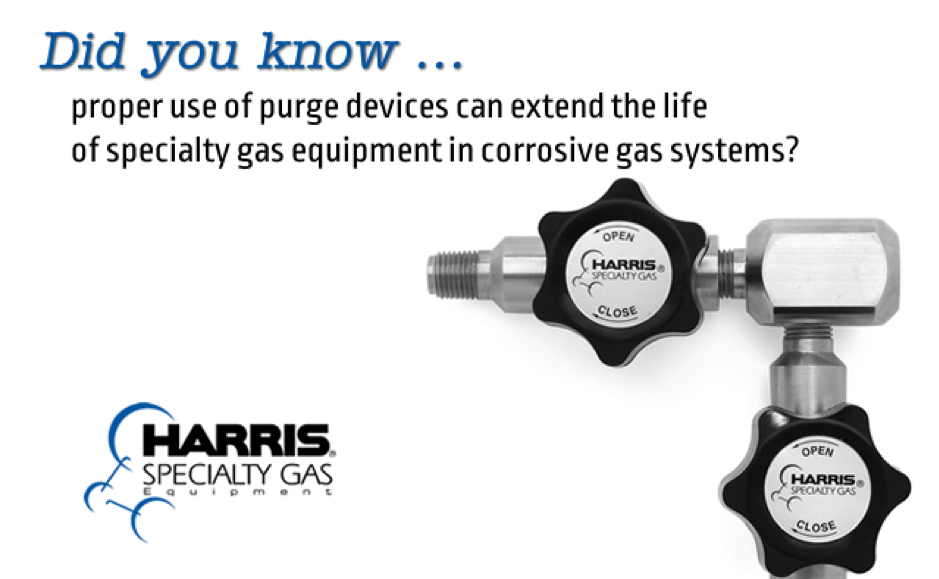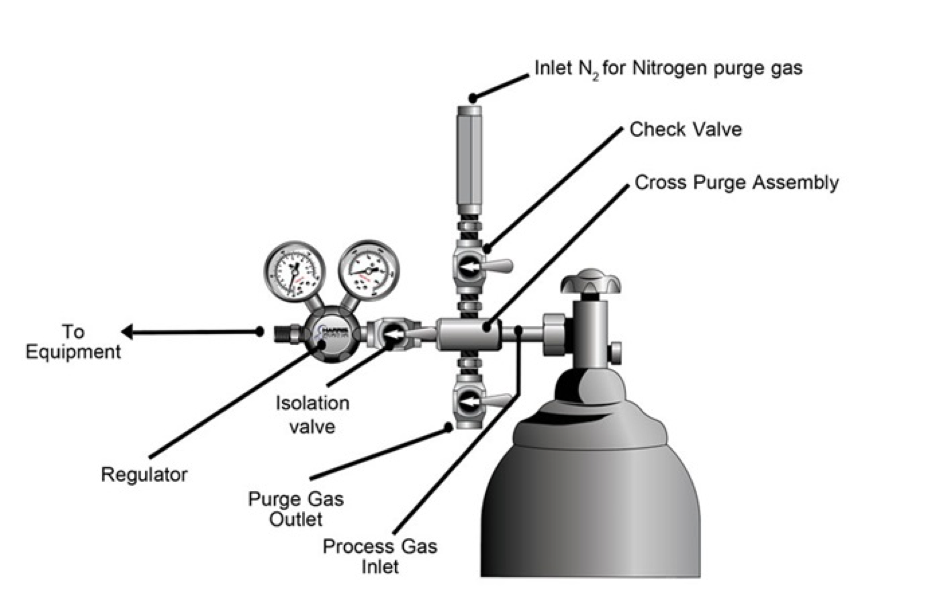
The proper use of purge devices can extend the life of your equipment by 2-3 times in corrosive gas systems. The costs associated with equipment used for corrosive and reactive gases is significant – up to $1,500 for a single regulator, or $20,000+ for a gas cabinet with all the bells and whistles. Due to the nature of the media, the life span for corrosive gas equipment is much shorter than for non-corrosive equipment, where regulators and valves may last for several years. Most manufacturer’s warranties on equipment used with corrosive gases are good for 90 days or less. Some manufacturers will even refuse to extend a warranty unless purge devices are used.
When cylinders are empty and need to be replaced, it is common for atmospheric contaminates and moisture to get into the gas stream. Moisture is the enemy of any corrosive/reactive gas and readily causes very acidic or caustic compounds to form inside regulators, valves and other gas handling equipment. This often leads to premature failure of the regulator. Purge devices can prevent this and extend the life of regulators and valves significantly.

In corrosive systems, a cross purge device should be connected between the cylinder and the regulator. It is also connected up to a dry, oil-free nitrogen source. When the gas cylinder is empty, the cross purge device will allow purging of any atmospheric contaminates that would normally enter the gas stream during cylinder change-out. A purge device is simple, but when used properly it will extend the life of gas equipment up to 2-3 times.
Do the math: buy one regulator every 4-5 months for chlorine service, or purchase one regulator with a cross purge that should last for 12-18 months (depending on frequency of use and other factors). In this scenario, your estimated savings would be roughly $1,000 per year.

David Gailey is the Product Manager for Specialty Gas Equipment at Harris and has over 35 years of experience in the industry. He is currently Vice-Chair of the CGA Industrial Gas Apparatus Committee and also serves on the Standards and Technical Panel for Underwriters Laboratories.
